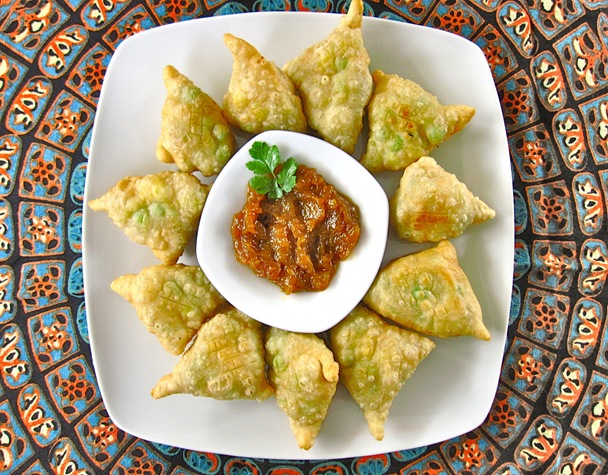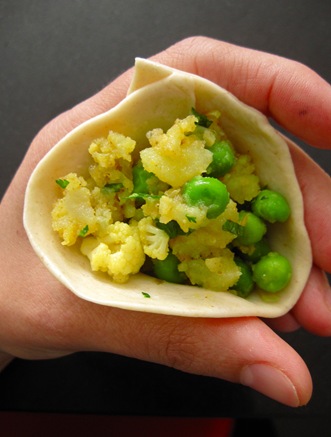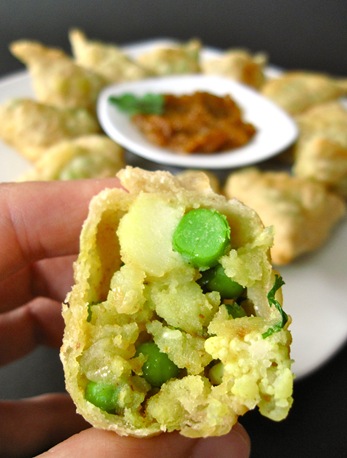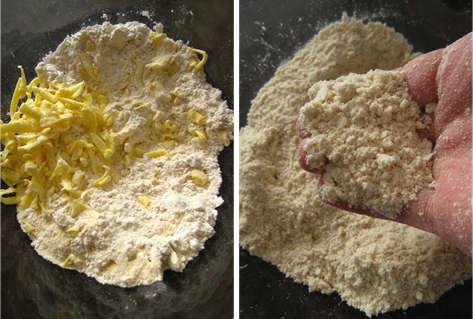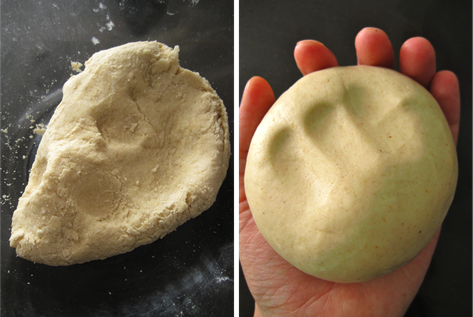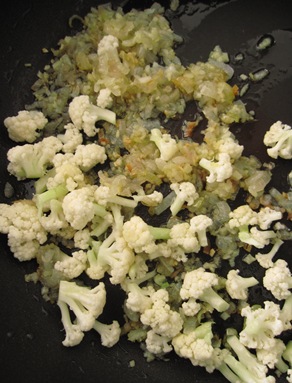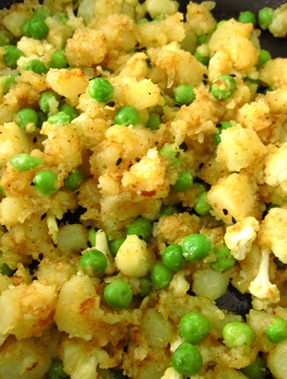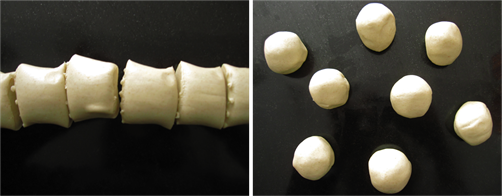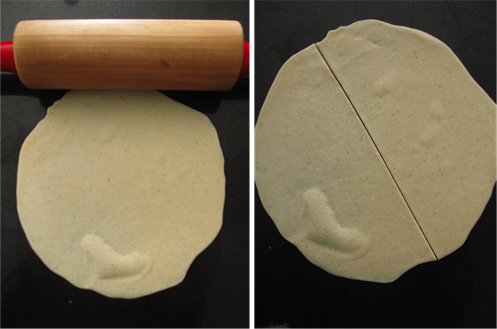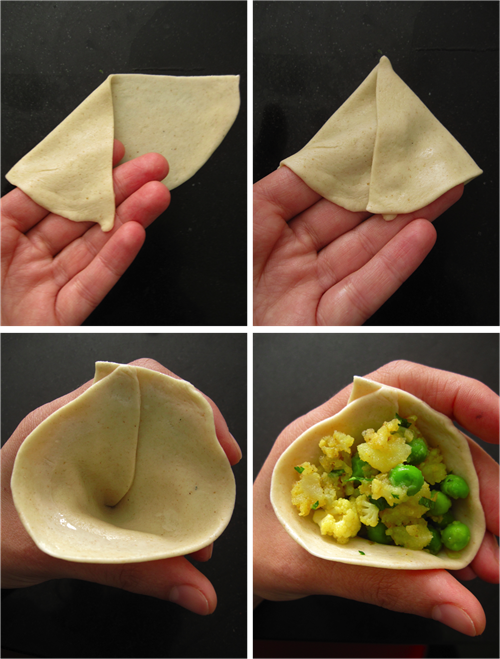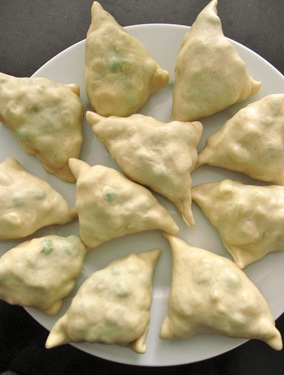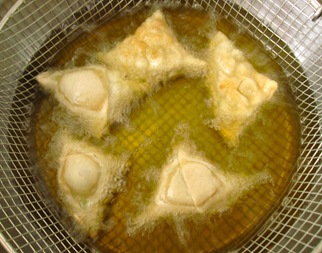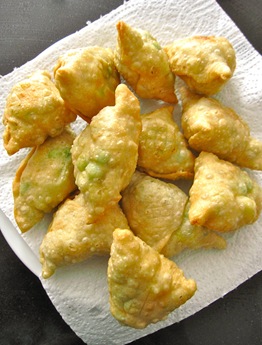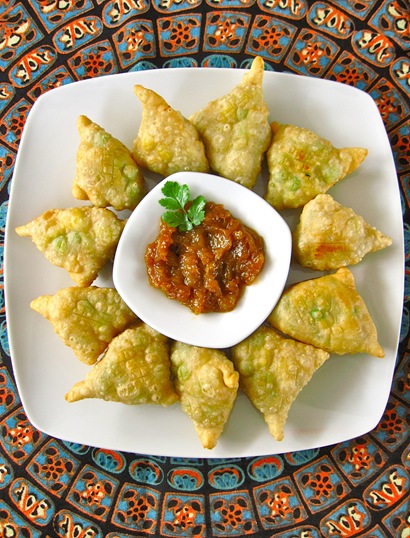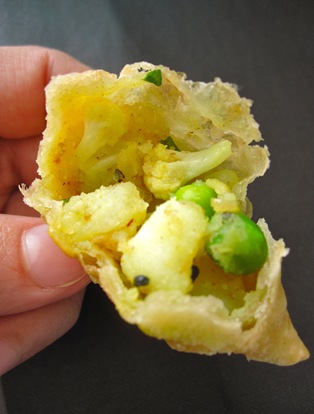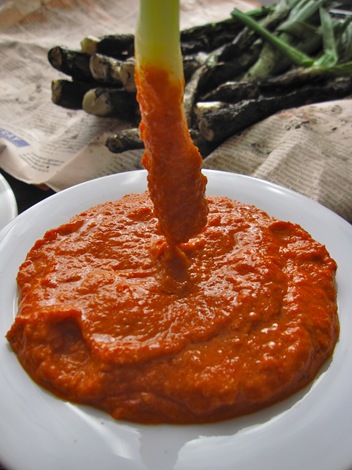I really think computers for the past month have set up against me! Each time I do anything related to the blog, something seems to happen! Either I try a new desktop editor and when I press “publish” it just doesn’t work, or I write on blogger and it translates “my language” to it’s own html format. But, I think today beats them all…(I don’t know if to laugh or cry) after over two hours of work, the computer just switches off and…surprise, all the draft is GONEEE!!!!So, sorry to say, I won’t be rewriting the long introduction it once was. This is the “reduced” version of that post…I just hope the next time I’m ready for war and I win and manage to publish from start to finish in one go!
Soooo, I present you these delicious samosas: with a skin that lasts crisps long after frying but as you take a bite into the surprisingly thin layer you find a generous tasty spiced up filling with a light crunch from the cauliflower. I’d seen some time ago a Ghary Rhodes video that presented a recipe of the bengali cook Jayanti Bhattacharyya. So, though I’m still meaning to try her tasty looking filling, I just took the cauliflower and adapted it into my usual one. The result: I loved it! the slight crunch, the flavour, it rounds it all up so that with each bite you feel the sweetness of the slow cooked shallots, spiced up by the curry and with small bursts of flavour from the whole seeds of kalonji, cumin and coriander. Equilibrated with the refreshing feel of the fresh ginger and a drizzle of lemon juice. In terms of feel, the softness of the potatoes that melt in your palate give way to a slight crunch from the toasted cauliflower!Excellent…You ought to try it!
I served it with a spiced up mango chutchey I made over 6 months ago that keeps perfectly in the fridge, but on their own they are as good, or served with a mild yoghurt sauce with a pinch of grated garlic and fresh mint. Hope you enjoy it!
Potato & cauliflower spiced samosas
(Enough for about 14 samosas)
For the skins:
120g of all purpose flour
10g of fine semolina (or just use flour)
pinch of salt
30g of ghee (if available, you can make it) butter or vegetable oil
50-60g of water (just enough to make a soft but not tacky dough)
For the filling:
250g of potatoes (about 2 medium potatoes)
50g fresh or frozen peas
30g of cauliflower, cut into small florets*
about 2 tbsp of vegetable oil
10g of fresh ginger
1-2 garlic cloves
2 shallots
1/4 tsp of coriander seeds
1/4 tsp of cumin seeds
1,5 tsp of a mild curry or 1 tsp of garam masala (or to taste!)
salt & freshly milled pepper to taste
a tsp of lemon juice, to taste
a pinch of kalonji seeds
a few leaves of fresh coriander (optional)
Plus:
a neutral oil for frying
*I would increase the amount of cauliflower to about 40-50g next time!
The filling is dead simple, the trickiest part is getting the skins right! The dough should be soft but fairly dry, not at all sticky, as it will further soften as it rests, and well worked to make it elastic so that it can be rolled very thin and be resistant to be filled up and fried without breaking! The other trick is a proper frying to get it to be crunchy and stay that way rather than turn soggy soon after frying. we’ll get into that, so lets begin…
The flours are mixed up and the fat is “rubbed into” it (this technique, known as “moyan dena” in India is used to obtain strong but elastic doughs that need to rolled out very thin and withstand the filling). Then, when it resembles breadcrumbs, the warmish water is added slowly.
Enough water is added to just bind the ingredients into a rough ball, then it must be kneaded until a smooth & soft dough is obtained. If pressed down, it should lightly bounce back, which means the gluten has developed enough to build up the elasticity.
Then wrap up and rest for at least 15 minutes, though I’d recommend over 30 minutes.
Meanwhile let’s prepare the filling: Boil the potatoes whole, let them cool lightly and dice them up in roughly 1 cm cubes.
Also, boil the peas without covering them until tender and cool them down immediately afterwards if you want to keep them bright green.
While they are cooking, prepare the “sofrito”: Toast the cumin and sesame seeds with a little oil (or dry roast them) until they begin to pop (they make a crackling sound) then lower the heat and add the rest of the oil. Slowly cook the finely chopped up shallot, ginger and garlic. Do not let the garlic brown or it will get bitter.
When the sofrito is almost ready, add the tiny cauliflower florets and cook them a bit as well until they soften a bit but still retain some crunch.
Add the potato and the curry, the kalonji seeds and then the peas and slow all together for a while so they absorb the flavour.
Taste and season with salt and some lemon juice .
Let cool down, this is important, so it doesn’t get the skins soggy, and add the chopped up fresh coriander.
Shaping the samosas takes a bit of practice, but if you get the dough right in the first place, it’s half-way there!
Roll the dough like a sausage to cut it up in 8 equal pieces. Then, round each into a ball to smooth them up as each with then be rolled out into a circle.
Cover the ones you are not using and work with a ball at a time. Flatten it and roll it out into a thin circle about 15 cm in diameter. I bought a kid’s baking set it IKEA just to get a gingerman pastry cutter and got this cute rolling pin that works excellent for dim sums and samosas!!!Cut each circle in half. Each half will be a samosa.
Now grab a small cup to fill with some cold water to make the sides stick as you shape it. Wet your finger and run it around the outside of the half circle. You want to make a cone by folding the flat sides up and pressing them lightly inside and outside to make them stick.
Hold the cone with one hand and fill it generously with the other leaving just a bit of dough to fold over to close the satchel/cone to form a triangle.
To close it up, first fold one side over the filling, then, the other over it and wet it lightly again, if needed, to make it stick.
Repeat with the remaining skins…
When ready, heat up the oil (it should be enough to deep fry the samosas) and test the temperature by dropping a pinch of dough (I forgot to mention I reserve this bit…but otherwise try with a piece of bread). The dough should fall up to the bottom and then slowly rise up.
If it rises up immediately, it is too hot, which means the crust will be too thin and will get soggy fast.
Fry a few at a time so the temperature doesn’t go down too much, as if it does it will soak up too much oil and feel greasy.
They shouldn’t get too dark, just a light golden. Remove them onto a piece of absorbent paper.
And serve at once!!!;)
So, are you going to try them???
One torn apart to show you the thin crust…Deliciiiiooouuusss!

